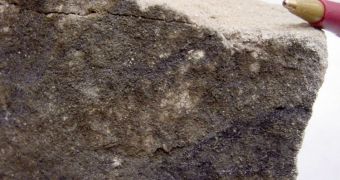A team of astronomers from the Carnegie Observatories announces the detection of arsenic and selenium, two neighboring elements in the Period Table, in a very old star located in the faint stellar halo surrounding the Milky Way.
This is the first time that such an old object reveals these two chemicals, which mark the transition between lighter and heavier elements. It is important to note here that the Big Bang produced only hydrogen, helium and extremely small amounts of lithium.
Therefore, all other chemicals were produced at the core of stars during the last 13.75 billion years. Until now, astronomers thought that very old stars could not possibly have elements as heavy as arsenic and selenium, simply because the building blocks required to make them were unavailable.
In addition, it's important to remember that the size and mass of stars is correlated to the type of chemicals they can synthesize at their cores. For instance, G-type yellow dwarfs like the Sun can only produce elements up to oxygen.
Massive stars, on the other hand, can produce chemicals up to iron, which contains more protons inside its nuclei than oxygen does. All elements are synthesized through nuclear fusion, the same process that powers the stars themselves.
“Most of the elements heavier than iron are made by a process called neutron-capture nucleosynthesis,” explains CO fellow Ian Roederer, who is also the lead author of a new paper detailing the findings. The work is published in the May 1 issue of the esteemed Astrophysical Journal.
“Although neutrons have no charge, they can decay into protons after they're in the nucleus, producing elements with larger atomic numbers. One of the ways that this method can work is by exposure to a burst of neutrons during the violent supernova death of a star,” the expert goes on to say.
“We call this process the rapid process (r-process). It can produce elements at the middle and bottom of the periodic table – from zinc to uranium – in the blink of an eye,” Roederer adds.
This is why the CO team was surprised to see the spectral signatures of arsenic and selenium, elements near the middle of the Periodic Table, in the 12-billion-year-old halo star HD 160617. Traces of cadmium, tellurium, and platinum were also found in the object.
Studies such as this have great potential for furthering our understanding of the Universe. Explaining “the r-process helps us know why we find certain elements like barium on Earth, or understand why uranium is so rare,” the CO team leader concludes, quoted by Astrobiology Magazine.

 14 DAY TRIAL //
14 DAY TRIAL //